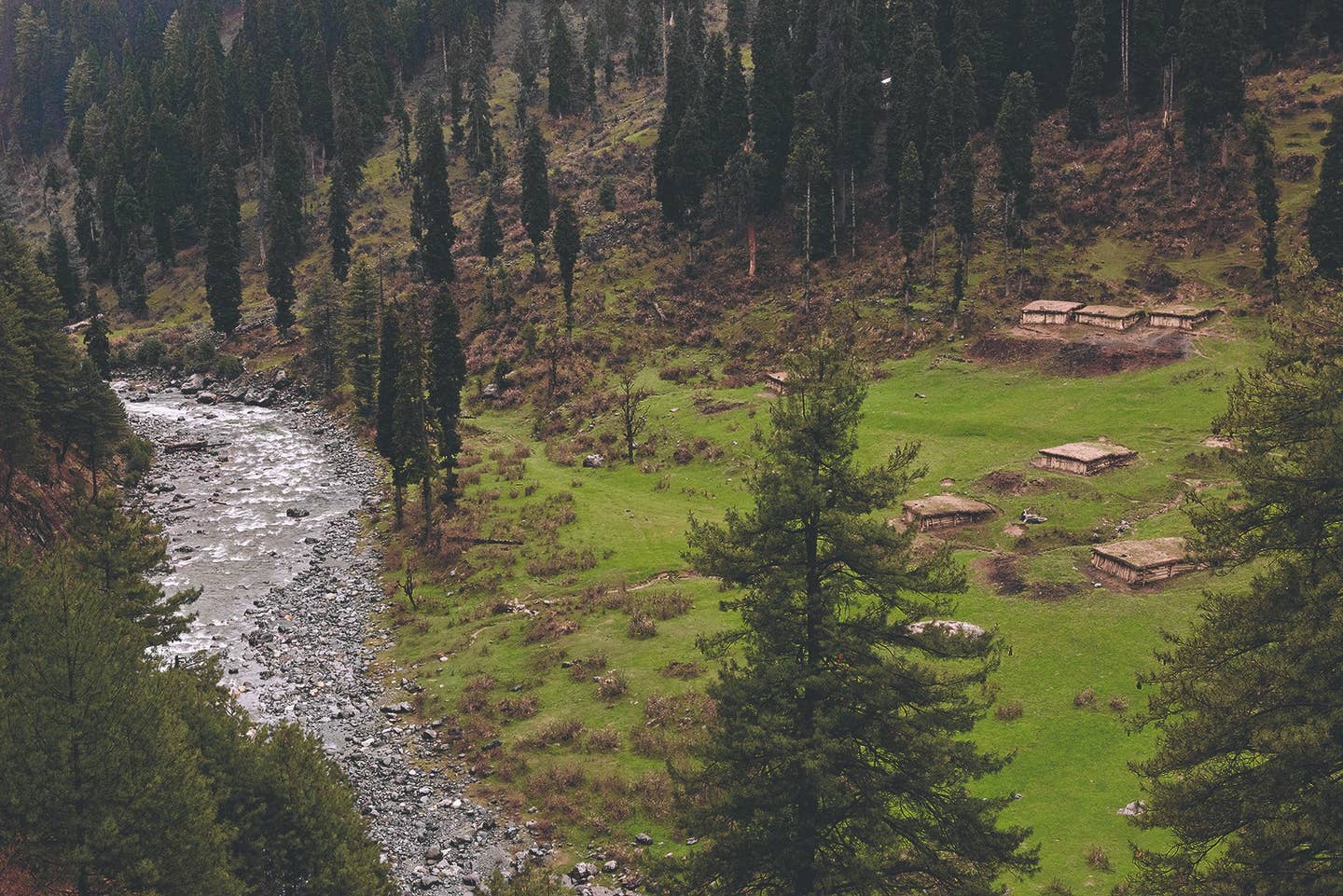
For Chef Romy Gill, the Allure of Kashmir’s Cuisine Was Worth the Epic Journey
“Great things never come from staying in your comfort zone.”
In her new book, On The Himalayan Trail: Recipes and Stories from Kashmir to Ladakh, British Indian chef Romy Gill shares the earthy and extraordinary dishes she encountered as part of her journey to the famously remote region in 2021. Merging a travelogue with a cookbook, Gill—who has appeared on the BBC’s “Ready Steady Cook” and was honored by Queen Elizabeth II with an MBE award—brings the backstory of each dish to life by spotlighting snippets of conversation and portraits of the people she met along the way.
When I was a child in India, growing up in West Bengal, we were the first family on our street to get a television—an enormous black-and-white affair. Occasionally, we would invite neighbors and friends round to watch Bollywood movies. These were mostly filmed in Kashmir, the valley that was once the summer capital of the Mughal—which straddles the Himalayas, bordered by Pakistan to the north and west, and China to the east. With its stunningly beautiful lakes, snow-capped mountains, and rolling meadows, the landscape looked like paradise. It was partly these movies that were responsible for my fascination with the remote state, one of the many, varied parts—each with their own distinct culture—that define the “real India.” Kashmir felt like a foreign country to me, and I longed to visit.
It wasn’t just the lofty mountains and rolling valleys that captured my imagination: the people and the food also had a huge part to play. My father, Santokh Singh Sandhu, worked in a steel plant with colleagues from across India, including several families from Kashmir, with whom we shared numerous meals and celebrations. It meant that I learned a huge amount about their culture, their religion, their food, their language, and their values. Every year, just before winter came, Kashmiri traders would also visit our township with shawls, carpets, dried fruits, and apples to sell. I have fond memories of my mother stocking up on purchases.
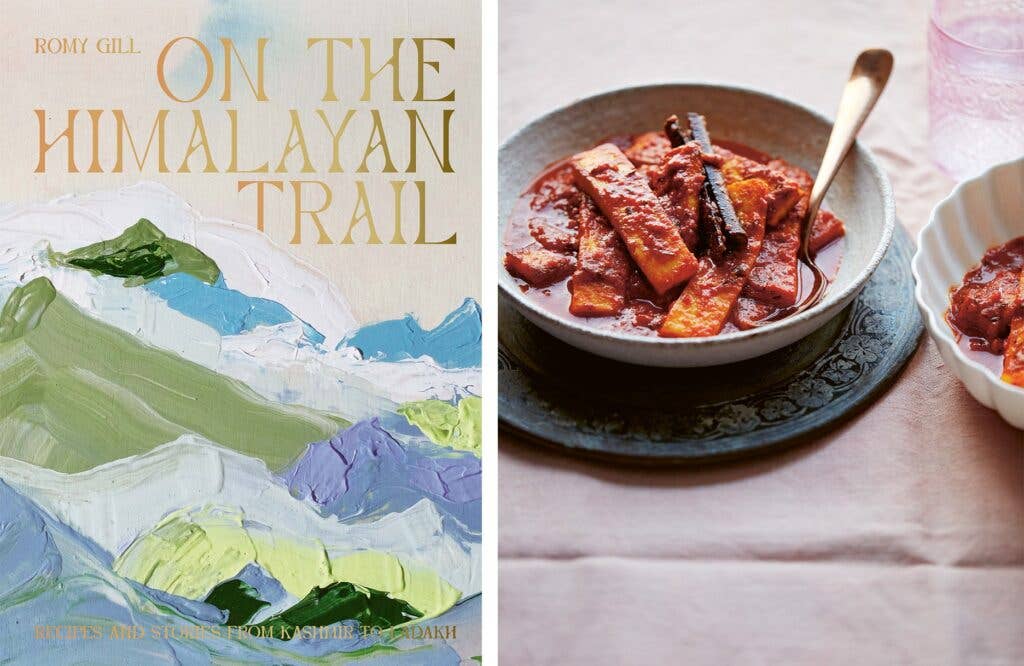
Now, as a professional chef, Kashmir intrigues me for even more reasons: the various ways of living, speaking, and feasting, and the different rituals ingrained into everyday life. Unlike other places in India, Kashmir is largely untouched by foreign and domestic tourists, primarily because of its political situation. In 1947, with the partition of India, both India and Pakistan tried to lay claim to Kashmir. Since then, fighting over the region has continued, and in 1990, the introduction of new powers for the military led to great government mistrust. As a result, over 70,000 Kashmiri Pandits fled, and continued to do so for the next decade. With so much political uncertainty in the region, its cuisine and culture is increasingly difficult to access—but I strongly believe that it’s a cuisine and culture the world should know more about. It was important to travel the parts unknown.
In recent years I’ve learned more and more about my home country through my travels to places like Leh, the Andaman and Nicobar Islands, and Himachal. I’ve enjoyed the chance to eat, cook, and learn about food in the company of local people and see the region through their eyes. So, when I finally decided to travel to Kashmir to work on the book, it would be no different.
I knew it wouldn’t be an easy trip to plan. It was April 2021, and the COVID-19 pandemic had the world in its grip: every country had its own travel restrictions and its own regulations once you got there. Returning to India at a time when the country’s ever-increasing case rates and deaths were making global headlines was certainly a risk—but still, I was desperate to make the journey.
Anthony Bourdain once said, “If I’m an advocate for anything, it’s to move. As far as you can, as much as you can. Across the ocean, or simply across the river. [...] Walk in someone else’s shoes, or at least eat their food—it’s a plus for everybody.” Great things never come from staying in your comfort zone. So, I took the plunge, spurred on by Bourdain’s words and my vision. As a chef, the trip was an education. The scenery, the people, the traditions, the love—and, of course, the food—all came together to create a truly incredible experience.
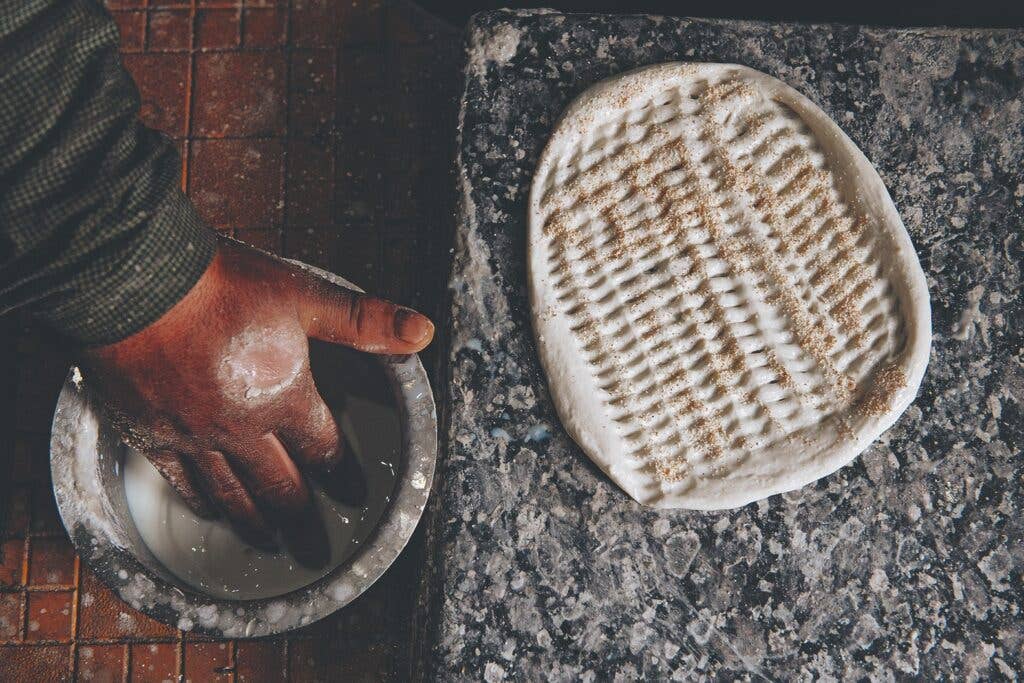
I was in Srinagar—a large city on the banks of the Jhelum River—when I met Amit, a man who my chef friend Thomas had introduced me to. Formerly a doctor, Amit left medicine and now runs a communications agency, and Thomas knew he had connections and knowledge that would serve me well in getting to know the region, its people, its food, and its culture.
When I finally got the opportunity to visit Amit’s house for lunch and meet him and his family for the first time, I was showered with a proper Kashmiri Pandit vegetarian feast: hearty dum aloo (baby potatoes in a thick, yogurt-based gravy with plenty of fennel), Kashmiri haakh (simple greens, which retain a little bite and feature just a hint of chili), katte baigan (a tamarind-infused aubergine dish), paneer kyalia (curd cheese with aromatic spices), and nadru yakhni (lotus stems in an aromatic yogurt gravy), all served with mooli chutney and rice.
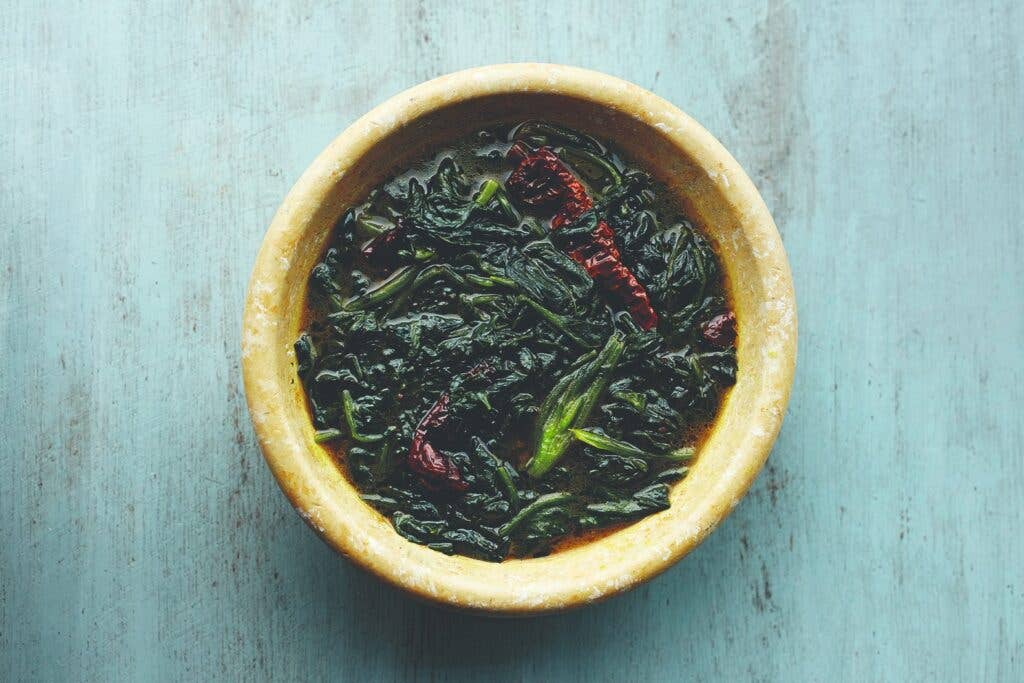
Throughout the meal, I chatted with Amit about Kashmir’s food, people, and beauty. He told me about his family’s history: his grandfather was Hridai Nath Wanchoo, who was known as the most important human rights activist in Kashmir, and worked tirelessly to improve workers’ rights, healthcare provision, and more. On Dec. 5, 1992, the day before activists attacked and demolished the Babri Masjid mosque in Ayodhya, Wanchoo was assassinated. In the three days following his death, Kashmir all but closed down as people gathered to pay their respects. Even after what happened to Amit’s family, they stood their ground and remained in Kashmir, unlike many others who fled the region in the 1990s.
After our glorious—and thought-provoking—lunch, Amit took us to meet a team of wazas (specially trained chefs), who were cooking for a party. Preparation for a wazwan is time-consuming and labor-intensive, and care must be taken to get everything just right. Each waza had their own part to play in creating the feast, much like a group of musicians coming together to play a piece of orchestral music. I was overwhelmed by the sights, sounds, and smells of all the big pots cooking. It whetted my appetite, despite the fact I had just eaten—so, of course, I sampled most of the dishes.
As we all know, no matter how full we feel after a big meal, there is always room for a little more.
Reprinted from On the Himalayan Trail: Recipes and Stories from Kashmir to Ladakh by Romy Gill with permission by Hardie Grant, 2022.
Recipes
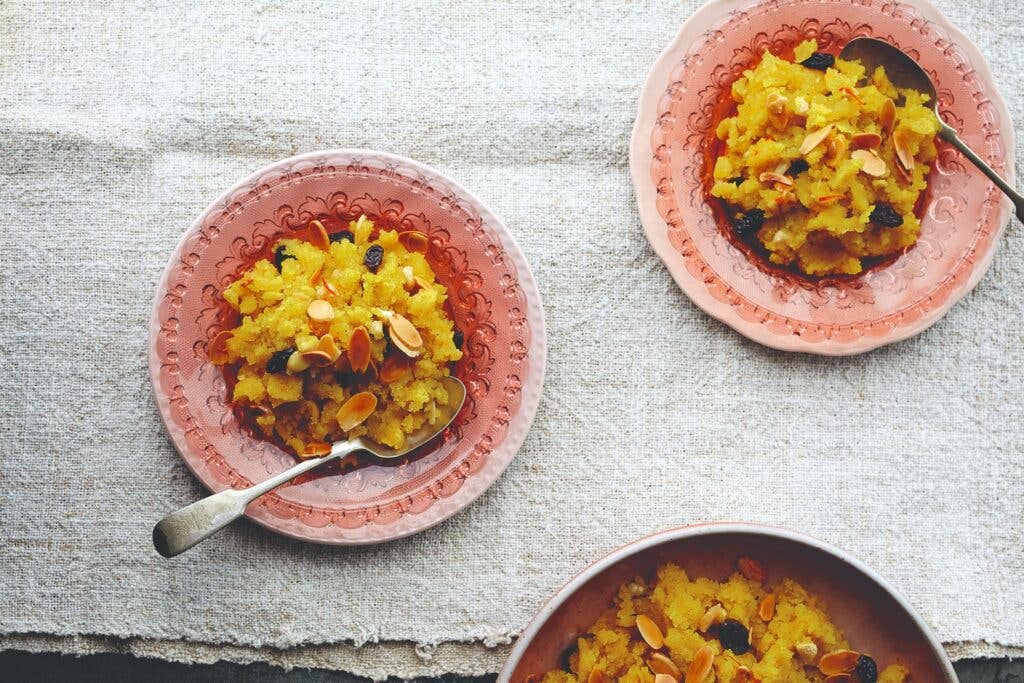
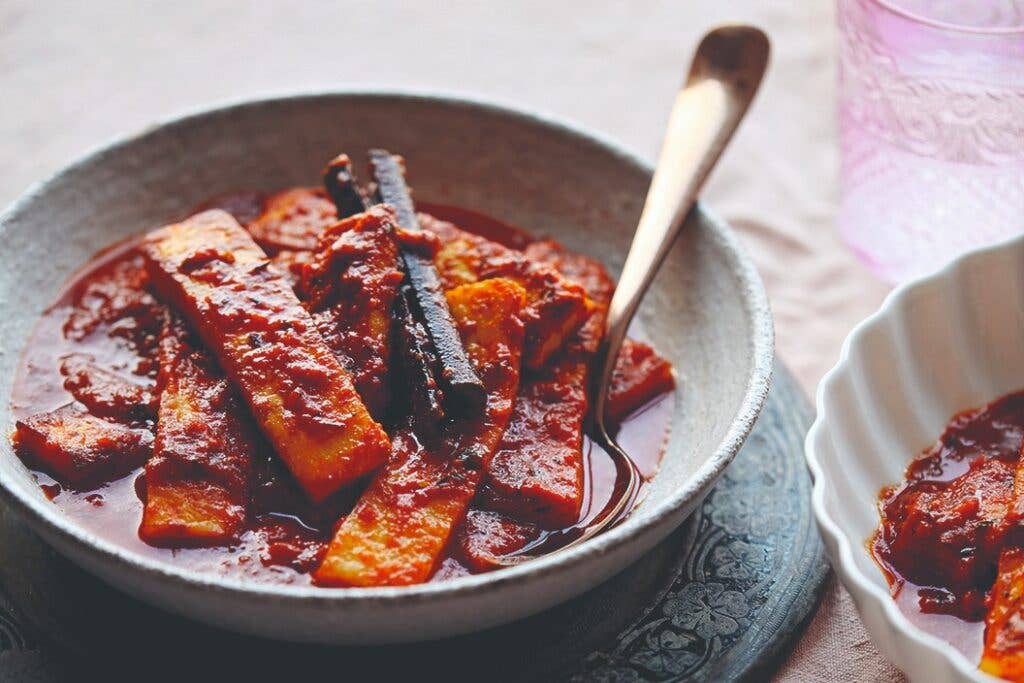
Keep Reading
Continue to Next Story










